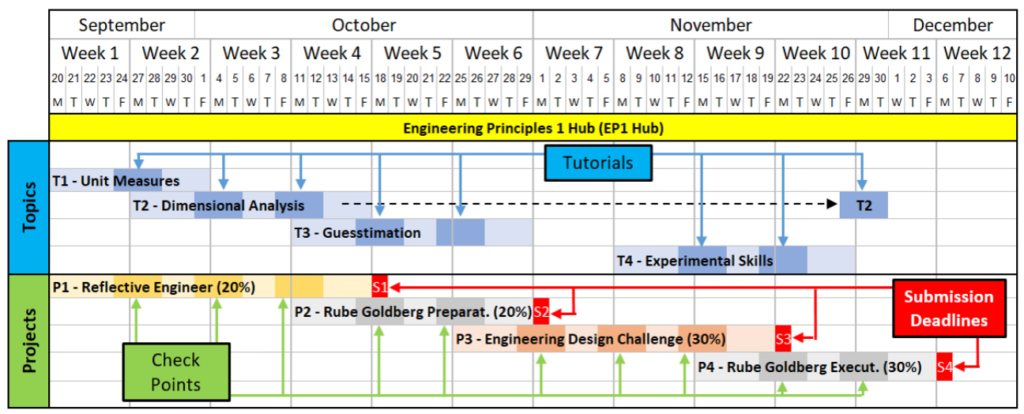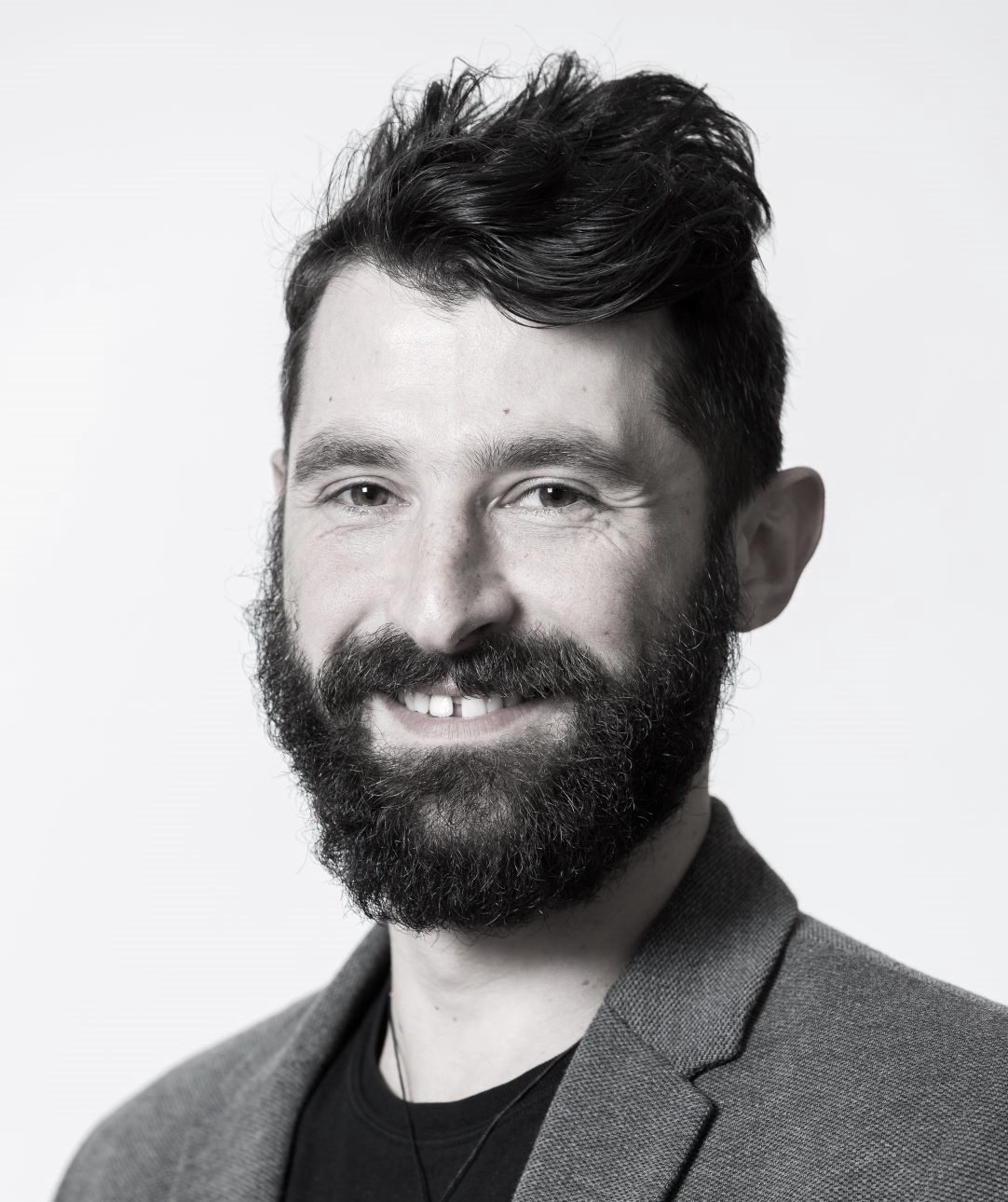
In this post, Dr Simone Dimartino shares his journey in redesigning the Engineering curriculum, starting in Year 1, which has been heavily influenced by the recent move to hybrid teaching. Simone is a Senior Lecturer in the School of Engineering. This post is part of the recent January and February Learning & Teaching Enhancement Theme: Online/hybrid enhancements in teaching practice.
In redesigning the Engineering curriculum, we decided to take a whole, new approach to engineering education, starting from the very beginning: year 1. Engineering Principles 1 and Engineering Design 1 are two optional courses that we offer to first-year engineering students, which have been re-shaped from scratch during 2021. This post focuses on Engineering Principles 1.
Engineering Principles 1 was designed to be accessible to any year 1 student with an interest in experiencing engineering first-hand, with a fine balance between technical skills and soft skills to cater for students outside Engineering, i.e. across the Sciences, Business, Economics, Arts and History. We have introduced innovative teaching methods, complementing a small set of traditional lectures with elements of learning with fun through practical projects, often referred to as ‘project-based learning’. Our aim is for students to be ‘affected’ by their education. That is, we want the students to feel things with their own hands, by making and creating new gadgets; to feel the emotions of what it really means being an engineer today, by proposing solutions to address global challenges such as social inequality and global warming.
The course has two main strands, the Topics and the Projects, both supported by the EP1 Hub (see figure 1).

EP1 Hub: The Engineering Principles 1 Hub provides a range of material to support the students through their Projects. As the projects unfold, a new and relevant topic is proposed every week, e.g. sustainable development and the UN sustainable development goals, whole systems thinking, critical thinking, technical writing, etc. These additional resources foster students’ deep reflection into technical and professional aspects underpinning the projects.
Topics: Fundamental topics with wide engineering relevance are delivered with short, pre-recorded videos complemented by self-study problems and in-person tutorials. The topics proposed span from Unit Measures, to Dimensional Analysis, to Guesstimation (back of the envelope calculations), to Experimental skills (e.g. understanding uncertainty, and critically reflect on expected results).
Projects: We have embedded a project-based learning approach, with 4 practical projects of relatively different nature, spanning from practical to conceptual, from design to construction and testing
Project 1: In the first project, the ‘Reflective Engineer’, the students are paired with one of our alumni to conduct an interview. Following the interview, they draft a one-page essay with their reflections on their own future aspirations as professional engineers, and their role in future society. For example, many students mentioned how they will contribute to meet the Sustainable Development Goals once they graduate, linking to the social responsibility and sustainability concepts covered in the EP1 Hub.
Project 2 and Project 4: The goal of these two linked projects is to design and build a Rube Goldberg device, i.e. an overcomplicated chain reaction machine designed to execute an extremely simple action. Each student in the group is in charge of a module of the whole device. The modules were described in individual student reports with sketches and design calculations based on guesstimation and dimensional analysis, together with description of experiments and measurements made using their modules. Each group also prepared a video showing the functioning of the final device.
Student feedback was very positive: many students suggested that the Rube Goldberg machine exercise was valuable for developing enthusiasm and creativity. They learned important characteristics of teamwork: the importance of being proactive; how to plan projects; how to communicate in meetings; and gaining in social confidence. Some noted that they had been encouraged to be more reflective and resilient to failure, while others felt that they had learned about the environmental impact of aspects of engineering. Fun videos of Rube Goldberg machines in action here and here (more videos with all student submissions in 2020 and 2021).
Project 3: The ‘Engineering for People Design Challenge’, run in collaboration with ‘Engineering without Borders UK’, is a collaborative project where the students explore the culture, politics, history and geography of a community facing specific challenges for sustainable development, before devising and proposing solutions to address key challenges such as water sanitation, energy, built environment and communications technology. For example, last year’s case study was located in two small villages in the northern coast of Peru, South America, while this year the case is focused on Aboriginal communities living in Cape York Peninsula, northern Queensland, Australia.
It is very important to propose solutions that make sense for the people in their economic, environmental and social context, and, at the same time, address global challenges such as social inequality and global warming. This project exposes students to the design loop, which is so central to all engineering disciplines, and gives the students a real case to test their ethics, diversity, responsibility and sustainability skills into action. Furthermore, the top five groups are then selected to participate to a worldwide grand finale, to showcase their ideas to academics and industry representatives and compete to be crowned Engineering for People Design Challenge winners.
Take home messages from hybrid teaching
A project-based approach is ideal in a hybrid environment as it enables full flexibility to run in-person checkpoints with the students if possible, but facilitation of group work is equally possible and successful in the virtual environment.
In the first year of delivery of EP1 (2020-2021), we could not use university facilities due to Covid restrictions. We took this as an opportunity to engage in creative activities that allowed students to explore beyond their own ‘classroom’. For example, in the Rube Goldberg task, students developed their modules in their own rooms, garages, homes and gardens, whilst still working in virtual groups with regular remote meetings. They had the chance to explore simple and common household items, and ‘play’ with them in new and unexplored ways to obtain a fun and captivating module. This enabled experiential learning in a safe environment where students felt able to fail until their module was workable. This was an element of success, which also released pressure from university facilities, and was retained as a staple in the EP1 course in the following academic years.
 Simone Dimartino
Simone Dimartino
Simone is a Senior Lecturer in the School of Engineering, where he teaches across the undergraduate and postgraduate programmes, both in School-wide courses and in the Chemical Engineering discipline. His teaching interests embrace various aspects of experiential learning, including project based learning and the combination of body and mind to produce more effective learning outcomes.


Such a great information!